Solar eclipse of July 9, 1926
An annular solar eclipse occurred on July 9, 1926. A solar eclipse occurs when the Moon passes between Earth and the Sun, thereby totally or partly obscuring the image of the Sun for a viewer on Earth. An annular solar eclipse occurs when the Moon's apparent diameter is smaller than the Sun's, blocking most of the Sun's light and causing the Sun to look like an annulus (ring). An annular eclipse appears as a partial eclipse over a region of the Earth thousands of kilometres wide. Annularity was visible from the islands of Pulo Anna and Merir in South Pacific Mandate in Japan (now in Palau) and Wake Island on July 10th (Saturday), and Midway Atoll on July 9th (Friday).
| Solar eclipse of July 9, 1926 | |
|---|---|
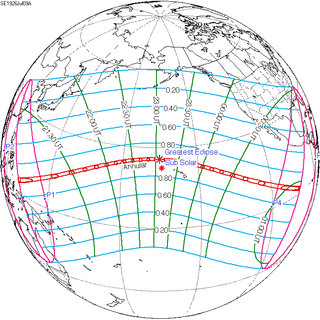 Map | |
| Type of eclipse | |
| Nature | Annular |
| Gamma | 0.0538 |
| Magnitude | 0.968 |
| Maximum eclipse | |
| Duration | 231 sec (3 m 51 s) |
| Coordinates | 25.6°N 165.1°W |
| Max. width of band | 115 km (71 mi) |
| Times (UTC) | |
| Greatest eclipse | 23:06:02 |
| References | |
| Saros | 135 (34 of 71) |
| Catalog # (SE5000) | 9342 |
Related eclipses
Solar eclipses 1924–1928
This eclipse is a member of a semester series. An eclipse in a semester series of solar eclipses repeats approximately every 177 days and 4 hours (a semester) at alternating nodes of the Moon's orbit.[1]
| Solar eclipse series sets from 1924–1928 | ||||
|---|---|---|---|---|
| Ascending node | Descending node | |||
| 115 | July 31, 1924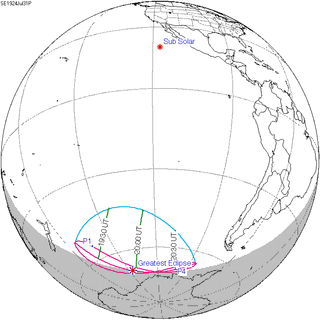 Partial |
120 | January 24, 1925 Total | |
| 125 | July 20, 1925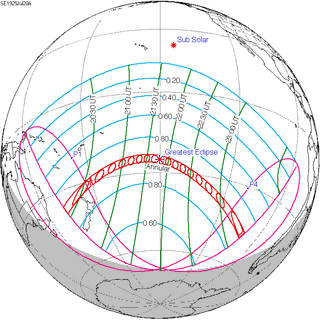 Annular |
130 | January 14, 1926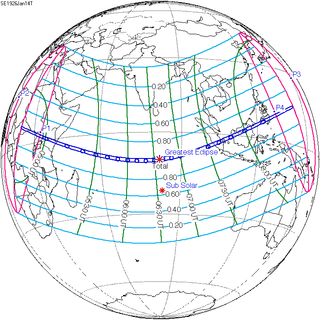 Total | |
| 135 | July 9, 1926 Annular |
140 | January 3, 1927 Annular | |
| 145 | June 29, 1927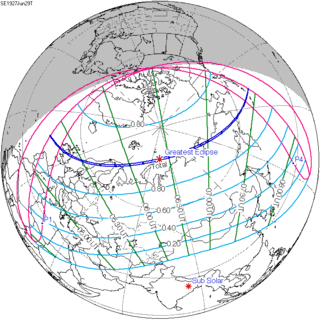 Total |
150 | December 24, 1927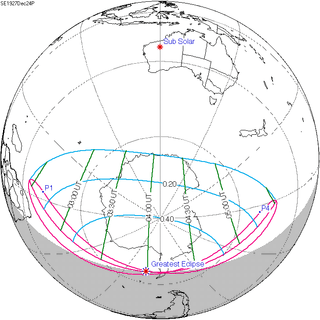 Partial | |
| 155 | June 17, 1928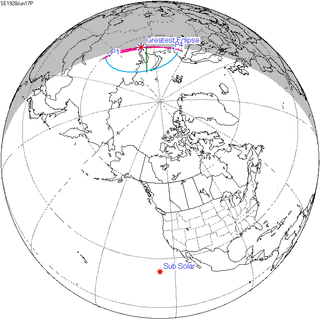 Partial | |||
Saros 135
It is a part of Saros cycle 135, repeating every 18 years, 11 days, containing 71 events. The series started with partial solar eclipse on July 5, 1331. It contains annular eclipses from October 21, 1511 through February 24, 2305, hybrid eclipses on March 8, 2323 and March 18, 2341 and total eclipses from March 29, 2359 through May 22, 2449. The series ends at member 71 as a partial eclipse on August 17, 2593. The longest duration of totality will be 2 minutes, 27 seconds on May 12, 2431.
| Series members 27–43 occur between 1800 and 2100: | ||
|---|---|---|
| 27 | 28 | 29 |
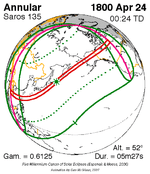 Apr 24, 1800 |
 May 5, 1818 |
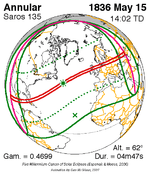 May 15, 1836 |
| 30 | 31 | 32 |
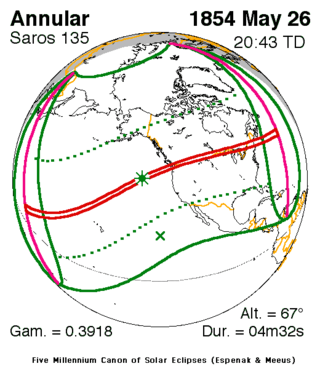 May 26, 1854 |
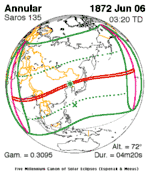 Jun 6, 1872 |
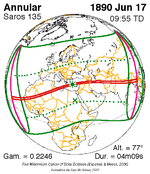 Jun 17, 1890 |
| 33 | 34 | 35 |
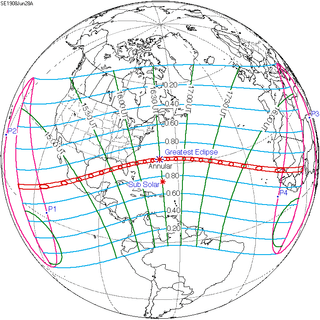 Jun 28, 1908 |
 Jul 9, 1926 |
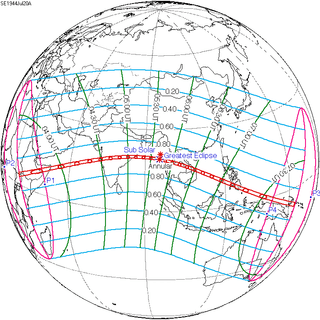 Jul 20, 1944 |
| 36 | 37 | 38 |
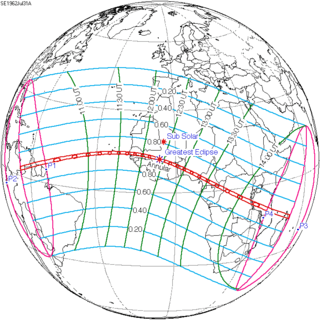 Jul 31, 1962 |
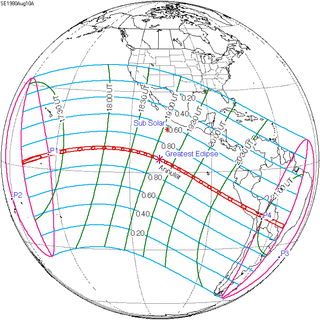 Aug 10, 1980 |
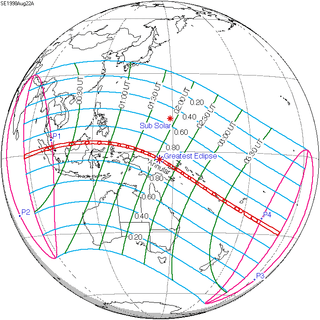 Aug 22, 1998 |
| 39 | 40 | 41 |
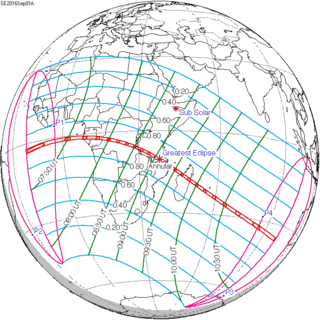 Sep 1, 2016 |
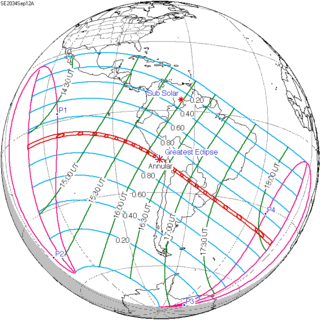 Sep 12, 2034 |
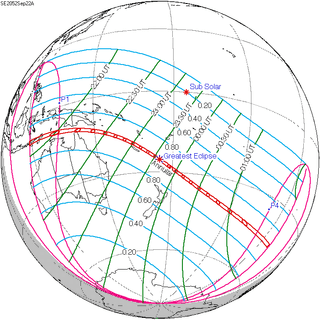 Sep 22, 2052 |
| 42 | 43 | |
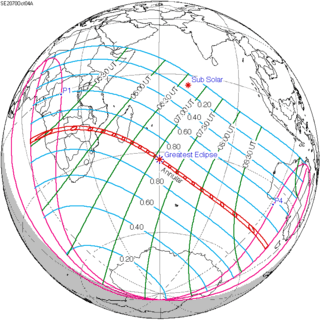 Oct 4, 2070 |
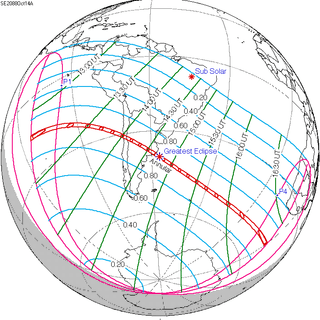 Oct 14, 2088 | |
Inex series
This eclipse is a part of the long period inex cycle, repeating at alternating nodes, every 358 synodic months (≈ 10,571.95 days, or 29 years minus 20 days). Their appearance and longitude are irregular due to a lack of synchronization with the anomalistic month (period of perigee). However, groupings of 3 inex cycles (≈ 87 years minus 2 months) comes close (≈ 1,151.02 anomalistic months), so eclipses are similar in these groupings.
| Inex series members between 1901 and 2100: | ||
|---|---|---|
 July 9, 1926 (Saros 135) |
 June 20, 1955 (Saros 136) |
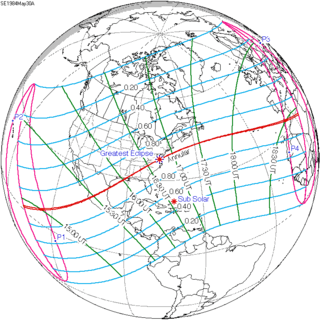 May 30, 1984 (Saros 137) |
 May 10, 2013 (Saros 138) |
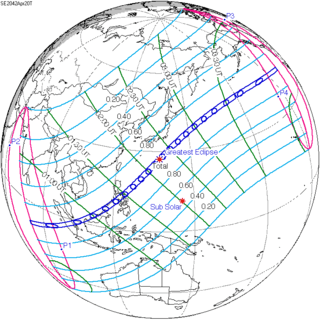 April 20, 2042 (Saros 139) |
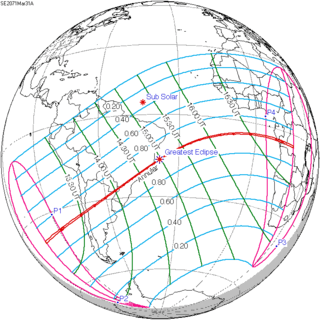 March 31, 2071 (Saros 140) |
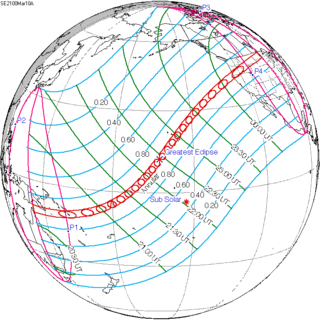 March 10, 2100 (Saros 141) |
||
Tritos series
This eclipse is a part of a tritos cycle, repeating at alternating nodes every 135 synodic months (≈ 3986.63 days, or 11 years minus 1 month). Their appearance and longitude are irregular due to a lack of synchronization with the anomalistic month (period of perigee), but groupings of 3 tritos cycles (≈ 33 years minus 3 months) come close (≈ 434.044 anomalistic months), so eclipses are similar in these groupings.
| Series members between 1901 and 2100 | |||
|---|---|---|---|
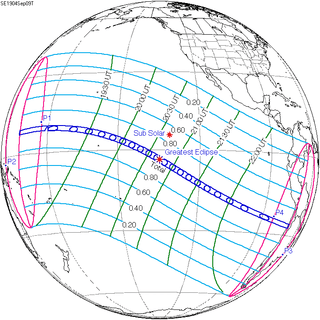 September 9, 1904 (Saros 133) |
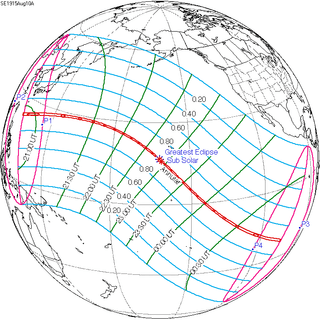 August 10, 1915 (Saros 134) |
 July 9, 1926 (Saros 135) | |
 June 8, 1937 (Saros 136) |
 May 9, 1948 (Saros 137) |
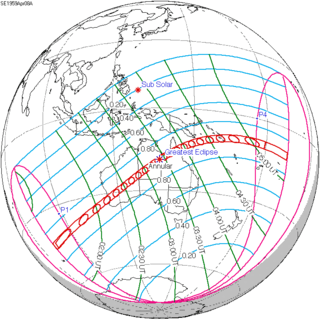 April 8, 1959 (Saros 138) | |
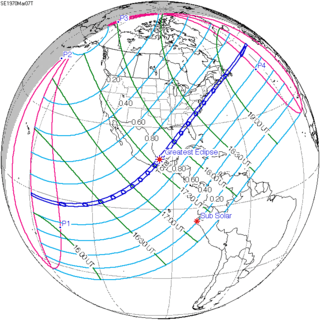 March 7, 1970 (Saros 139) |
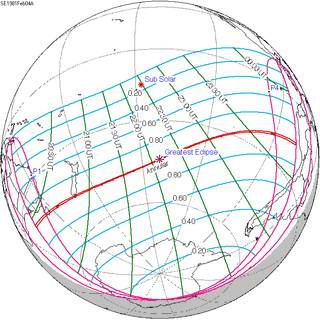 February 4, 1981 (Saros 140) |
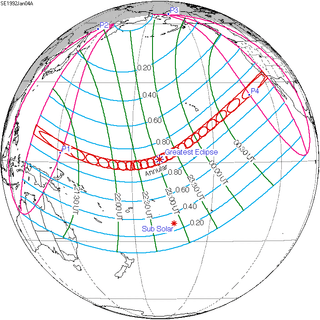 January 4, 1992 (Saros 141) | |
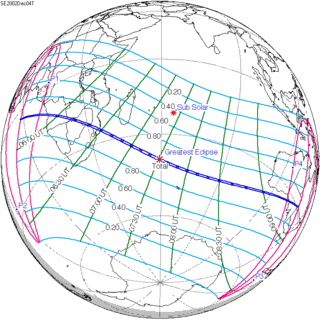 December 4, 2002 (Saros 142) |
 November 3, 2013 (Saros 143) |
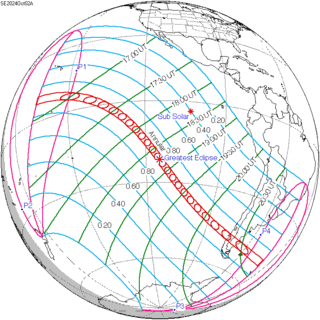 October 2, 2024 (Saros 144) | |
 September 2, 2035 (Saros 145) |
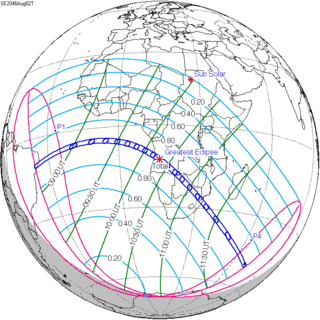 August 2, 2046 (Saros 146) |
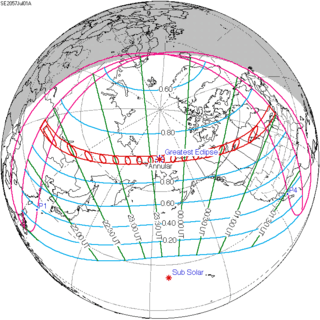 July 1, 2057 (Saros 147) | |
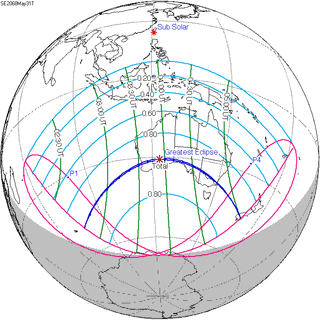 May 31, 2068 (Saros 148) |
 May 1, 2079 (Saros 149) |
 March 31, 2090 (Saros 150) | |
Notes
- van Gent, R.H. "Solar- and Lunar-Eclipse Predictions from Antiquity to the Present". A Catalogue of Eclipse Cycles. Utrecht University. Retrieved 6 October 2018.
References
- Earth visibility chart and eclipse statistics Eclipse Predictions by Fred Espenak, NASA/GSFC
.jpg)
